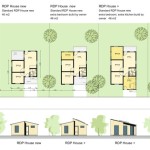Essential Aspects of Housing Development Planning Strategy
Housing development planning is a critical component of urban planning, ensuring the provision of adequate and affordable housing for all residents. A well-defined Housing Development Planning Strategy (HDPS) serves as a roadmap for guiding housing development efforts, promoting sustainable communities, and addressing the diverse housing needs of a population.
Here are the essential aspects of an effective HDPS:
1. Needs Assessment and Market Analysis
A thorough assessment of housing needs and market conditions is vital. This includes analyzing demographic trends, household income levels, housing affordability, and the availability of different housing types. A comprehensive market analysis helps identify unmet housing needs and informs decisions about the types and locations of new housing developments.
2. Land Use Planning and Zoning
HDPS should align with land use planning and zoning regulations to ensure the allocation of appropriate land for housing development. Zoning laws should promote a mix of housing types, densities, and tenure options to cater to diverse needs. Proper land use planning ensures the efficient and sustainable utilization of land resources.
3. Infrastructure and Transportation Planning
Adequate infrastructure and transportation systems are essential for supporting new housing developments. HDPS must consider the provision of roads, utilities, public transportation, and other infrastructure necessary for a livable and accessible community. Coordination with transportation planning agencies is crucial to ensure efficient connectivity and reduce traffic congestion.
4. Affordability and Financial Strategies
Ensuring affordability is a key objective of HDPS. This involves exploring financial strategies such as rent control, subsidies, and incentives to make housing more accessible to low- and moderate-income households. HDPS should also promote mixed-income housing developments to create inclusive and diverse communities.
5. Sustainability and Energy Efficiency
Incorporating sustainable practices is crucial in housing development planning. HDPS should promote energy-efficient building designs, renewable energy sources, and environmentally friendly materials. Sustainable housing can reduce carbon emissions, mitigate climate change impacts, and enhance the overall well-being of residents.
6. Community Engagement and Collaboration
Active community engagement is vital throughout the HDPS process. Public input and feedback help ensure that the plan reflects the needs and aspirations of the community. Collaboration with local stakeholders, community organizations, and developers fosters a shared vision for housing development and enhances its acceptance.
7. Implementation and Monitoring
Effective implementation is essential to realize the goals of the HDPS. Establishing clear timelines, assigning responsibilities, and setting up monitoring mechanisms ensures the timely execution of the plan. Regular monitoring and evaluation allow for adjustments based on changing conditions and performance indicators.
By incorporating these essential aspects, Housing Development Planning Strategies can effectively guide sustainable, equitable, and accessible housing development that meets the diverse needs of communities and promotes thriving urban environments.

Housing Development Plan Formulation Process Scientific Diagram

Ppn90 Planning For Housing

Developing Small Sites Key Steps To Successful Design Planning Permission Urbanist Architecture Company London
Planning Development
Residential Design Including Adaptable And Accessible Accommodation

Understanding Strategic Spatial Planning To Effectively Guide Development Of Urban Regions Sciencedirect

Realising Development Potential Planning Approved For 7x Family Homes In Sussex Plainview

Local Planning Strategy Review Shire Of Northam

Affordable Housing And Mix

How Much Development And Where Greater Cambridge Shared Planning








